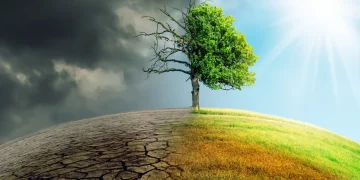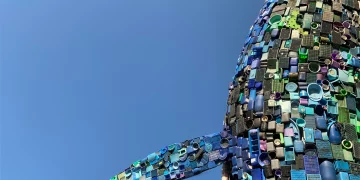In an age of globalization, rapid technological advancements, and increasing awareness of social issues, the boundaries of culture are expanding. New ideas, identities, and expressions are crossing borders more fluidly than ever before. However, with this broadening of cultural horizons, a pressing question arises: are these shifts fostering inclusivity or driving divisions? While some argue that modern cultural exchanges are building bridges and promoting unity, others contend that the same forces are fragmenting societies and exacerbating polarization.
This article explores the current state of cultural interaction, analyzing the forces that shape inclusion and division, and how these dynamics influence both global and local landscapes. Through examining factors such as social media, global migration, identity politics, and cultural appropriation, we can better understand whether cultural horizons are truly becoming more inclusive or divisive.
1. Globalization and the Flow of Ideas
The digital age has transformed how cultures interact. Social media platforms, digital communication, and the internet have opened up a global marketplace for ideas, arts, and knowledge. This phenomenon, commonly referred to as globalization, has allowed cultural exchanges to occur at an unprecedented scale. From the spread of K-pop around the world to the widespread popularity of Middle Eastern cuisine in the West, cultural products and practices are no longer confined to their place of origin.
This influx of ideas can undoubtedly be seen as an inclusive development. Cultures are no longer isolated in their geographic boundaries; they are interwoven in a global tapestry. This has led to greater awareness and appreciation of cultural diversity. For example, the Black Lives Matter movement, originating in the U.S., has sparked global conversations about racial justice, leading to solidarity across national borders.
However, there is another side to this process: cultural homogenization. As dominant cultures, particularly from Western countries, exert influence globally, there is a tendency for indigenous traditions and local cultures to be marginalized. The global spread of Western consumer culture, media, and technology can lead to the erosion of local customs and languages. In this way, while some cultures are being celebrated and shared, others are at risk of being overshadowed or diluted.
2. The Role of Social Media: A Double-Edged Sword
Social media is a powerful tool that amplifies voices and facilitates global dialogue. Platforms like Twitter, Instagram, and TikTok allow individuals from different cultural backgrounds to share their experiences and perspectives instantly. Hashtags such as #MeToo and #BlackLivesMatter have gained traction worldwide, creating a sense of shared global activism and solidarity.

Yet, social media also plays a divisive role. The anonymity and distance provided by these platforms allow for the easy spread of misinformation, hate speech, and toxic discourse. The rapid exchange of ideas can sometimes lead to echo chambers, where individuals are exposed only to content that aligns with their existing beliefs. This intensifies polarization and reduces the potential for genuine cross-cultural understanding.
Moreover, social media often commodifies culture in a way that reduces its depth and complexity. Cultural appropriation, the act of taking elements from a culture without permission or respect, is a recurring issue. This can lead to feelings of exploitation and resentment among marginalized groups. When traditional symbols, practices, or clothing are worn by people outside of their cultural context, it may be seen as disrespectful or trivializing.
3. Migration: The Flux of Identity and Belonging
Global migration patterns have increased in recent decades, contributing to a shift in how cultures coexist within societies. People are no longer confined to their country of origin, and entire communities have found new homes in foreign lands. While this has fostered cultural exchange, it has also brought issues of identity and belonging to the forefront.
Immigrants and refugees often struggle to preserve their cultural identity while adapting to the values and norms of their new country. At the same time, the local population may grapple with questions of integration and social cohesion. Tensions arise when the preservation of cultural traditions conflicts with the desire for societal harmony.
On the one hand, migration has the potential to make societies more inclusive by introducing new perspectives and fostering empathy. When individuals from different backgrounds interact, they are more likely to challenge stereotypes and broaden their worldviews. Communities that embrace diversity often see innovation and creativity thrive as a result of this interaction.
On the other hand, the fear of losing national identity and cultural homogeneity has led to the rise of nationalism and xenophobia in some countries. Populist movements in Europe, the United States, and other parts of the world have capitalized on fears of cultural dilution. They argue that immigration leads to societal fragmentation and the erosion of traditional values. This has led to the strengthening of borders—both literal and figurative—as a means of protecting cultural integrity.
4. Identity Politics: A Quest for Recognition
Identity politics has become a significant feature of modern cultural discourse. Social movements based on race, gender, sexual orientation, and other identity markers seek to elevate marginalized voices and secure recognition and rights for historically oppressed groups. These movements often push for inclusivity, but they also highlight the divisions that exist within society.
The focus on identity can be empowering, as it provides a platform for marginalized groups to assert their rights and fight against systemic inequality. For example, the feminist movement has succeeded in challenging patriarchal norms, and the LGBTQ+ community has made great strides in securing legal rights in many parts of the world. These achievements are undoubtedly inclusive in nature, as they seek to ensure that all individuals, regardless of their identity, have equal access to opportunities and protections.
However, identity politics can also be divisive. When individuals define themselves primarily by their identity group, it can lead to a “us vs. them” mentality. The emphasis on group-based identity can sometimes result in a lack of common ground and hinder meaningful dialogue between different groups. Moreover, when identity becomes politicized, it can lead to the fracturing of larger societal bonds, as people become more focused on their differences rather than their shared humanity.
5. Cultural Appropriation: Respect or Exploitation?

Cultural appropriation is a phenomenon that occurs when individuals or groups adopt elements of another culture, often without understanding or respect for its significance. This issue is particularly contentious in cases where the cultural elements being appropriated belong to marginalized or historically oppressed groups.
On one hand, cultural exchange and borrowing are intrinsic to human history. Trade routes, migration, and colonialism have all facilitated the blending of cultures, leading to the creation of new traditions, art forms, and ideas. In many ways, cultural fusion can be seen as a natural outcome of human interaction, and it has led to the enrichment of societies.
On the other hand, when cultural elements are taken out of context or used without understanding, it can perpetuate harmful stereotypes and reinforce power imbalances. For example, when fashion designers or celebrities adopt indigenous clothing or symbols as a form of style, it can be seen as trivializing sacred traditions. Similarly, the use of African American vernacular in pop culture or the adoption of spiritual practices from indigenous cultures without proper acknowledgment or respect can be seen as exploitative.
6. Art, Media, and Representation: Who Gets to Tell the Story?
One of the most significant ways that culture shapes our perceptions is through media and the arts. Representation matters—how cultures are portrayed in films, music, literature, and other forms of media can influence how they are understood by wider society. In recent years, there has been a concerted effort to diversify representation and ensure that voices from marginalized groups are heard.
For example, Hollywood has made significant strides in casting actors of color in leading roles and producing stories that reflect a broader range of experiences. The success of films like Parasite, Black Panther, and Coco demonstrates that audiences are eager for stories that reflect cultural diversity.
However, the media industry is still dominated by a small number of powerful voices, many of which belong to Western, predominantly white, elites. As a result, there is often a skewed or incomplete representation of cultures. This leads to the risk of cultural erasure or misrepresentation, as minority cultures are reduced to stereotypes or exoticized for entertainment value.
7. The Future: Bridging Divides or Fostering Fragmentation?
The future of cultural interaction will depend on how societies approach the balance between inclusion and division. There is immense potential for cultures to coexist and thrive together, creating a richer and more diverse global community. However, this requires genuine efforts to understand, respect, and celebrate differences, while also finding common ground on shared values.
Education plays a crucial role in fostering this understanding. By teaching children about diverse cultures, histories, and perspectives, we can cultivate empathy and curiosity from a young age. In addition, efforts to combat hate speech, misinformation, and intolerance in both the real world and online spaces will be critical in reducing polarization.
In the end, whether cultural horizons become more inclusive or divisive will largely depend on how we navigate these complexities. The opportunity to build bridges is there—but it requires intentionality, respect, and an open-minded approach to the diversity of human experience.























